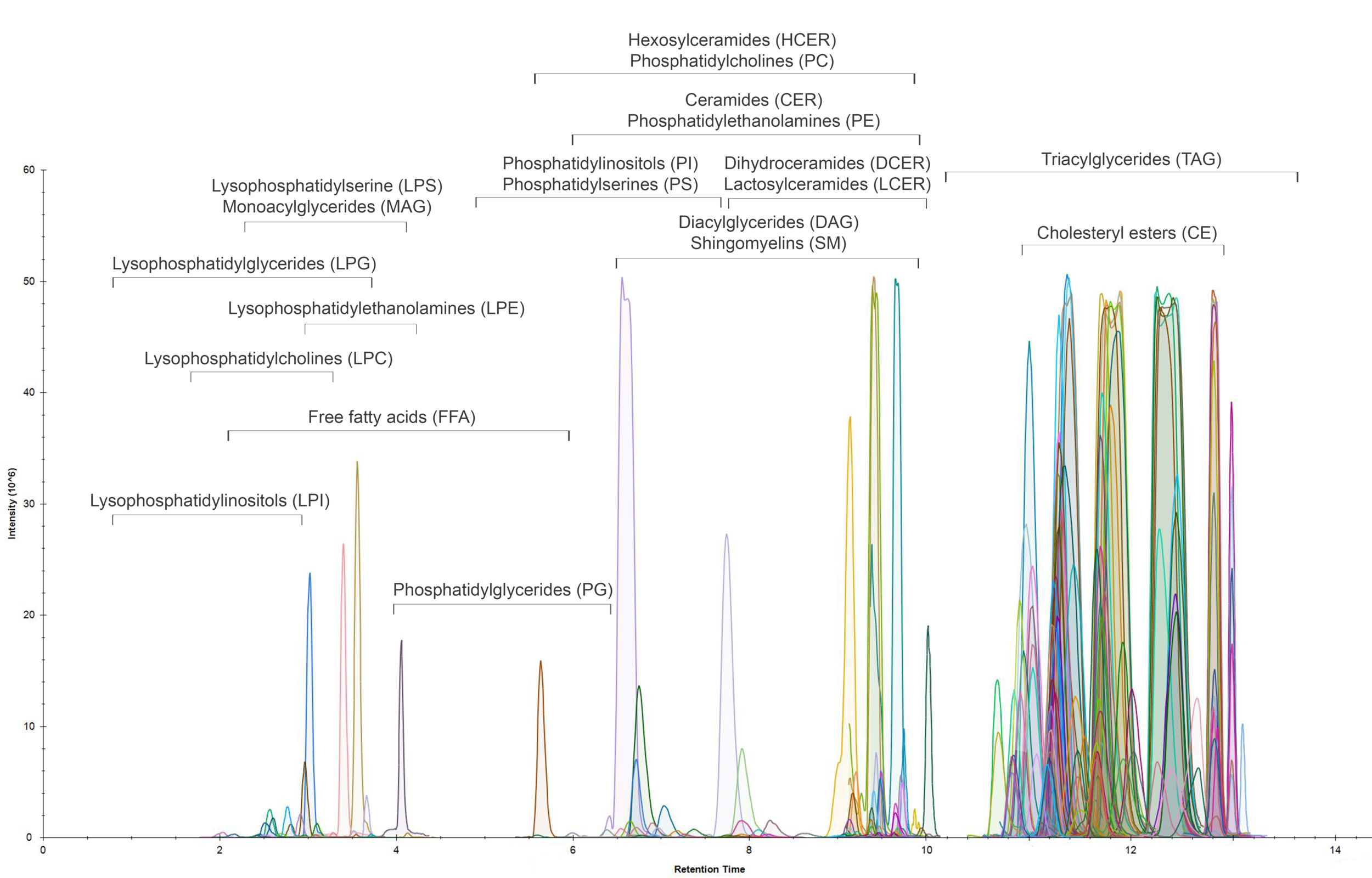Broad lipid profiling of acute burn patients
The following information was provided by Dr Monique Ryan, Australian National Phenome Centre, Murdoch, Western Australia.
Broad lipid profiling using SCIEX QTRAP 6500+ with ExionLC of 61 c showed variation of lipid species on an OPLS-DA when coloured for perceived pain (see Figure below). Patients ranked their scarring pain 6 weeks after healing from a burn wound less than 15% of their total body surface area from 1 (low pain) to 5 (high pain). Loadings determined that the phosphatidylserine, phosphatidylethanolamine and phosphatidylcholine classes contributed the most to pain outcomes. Figure generated using SIMCA®17.
Lipid Profile Differences in Painful Burn Scars
The next figure shows the chromatograph of pooled quality control plasma sample of 20 different lipid classes, using SCIEX QTRAP 6500+ with ExionLC. 1231 multiple reaction monitoring transitions of different lipid species were developed with SCIEX to create a targeted high-throughput broad quantitative lipid profiling method for translation to large population cohorts. Spectra analysed and figure generated with SCIEX Analyst 1.7.1 and Skyline 21.1 software.
Broad Lipid Profiling Using SCIEX QTRAP 6500+
Monique is interested in clinical metabolomics and lipidomics as well as LC-MS method development. Her instruments of choice include LC-TQ-MS, LC-QToF-MS and Monique uses software RStudio, SIMCA, Excel. She is keen to collaborate on translational research projects, in particularly where mass spectrometry is applied to clinical settings.
Please follow this link if you would like to get in touch with Monique.

